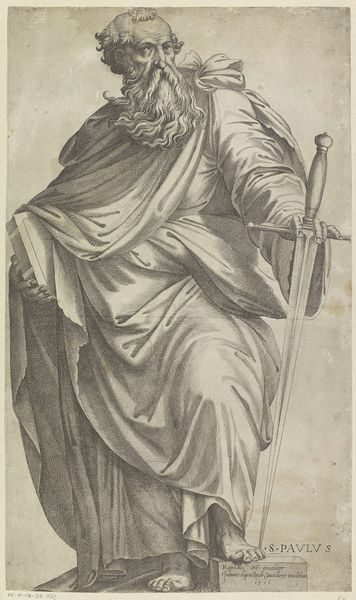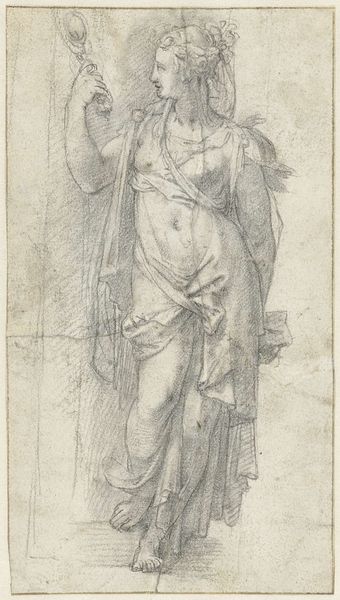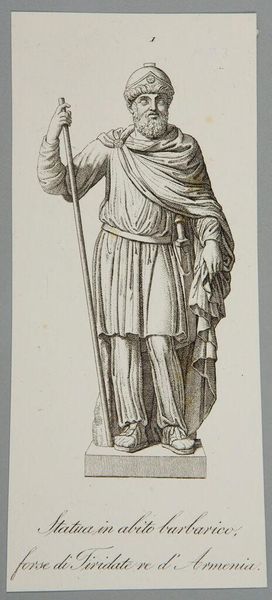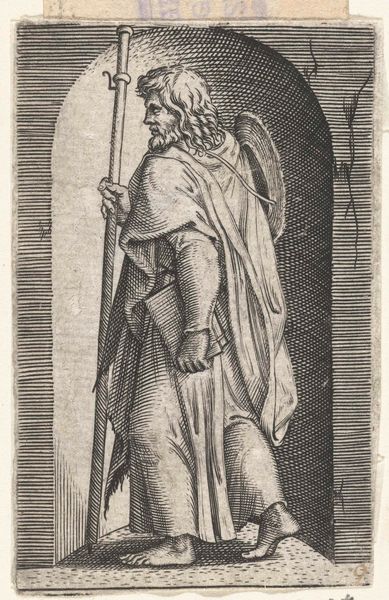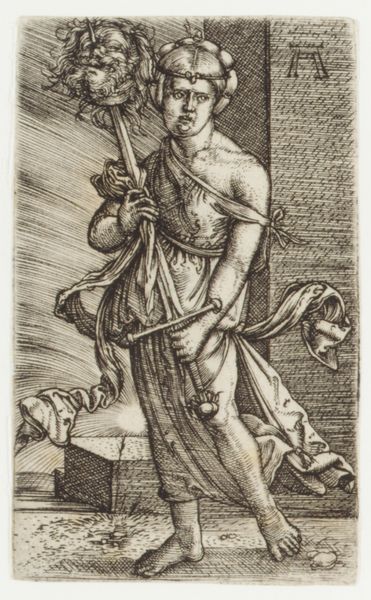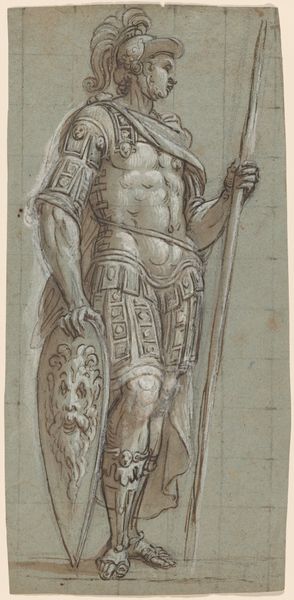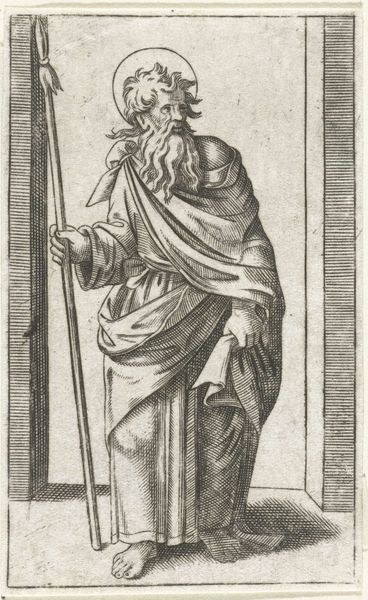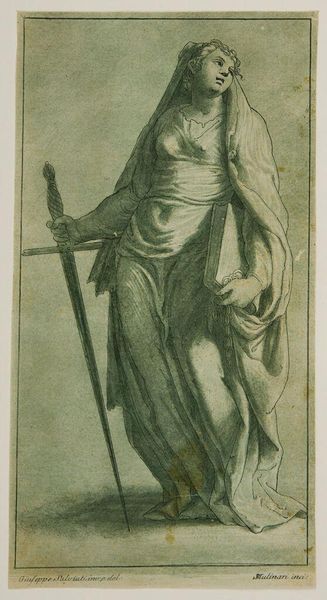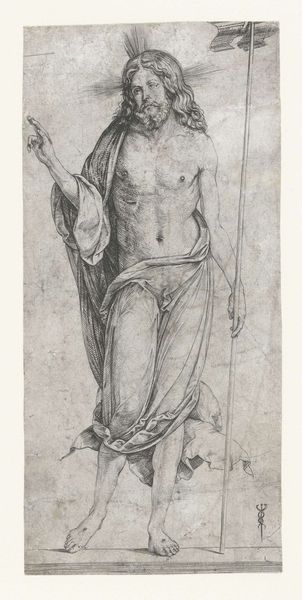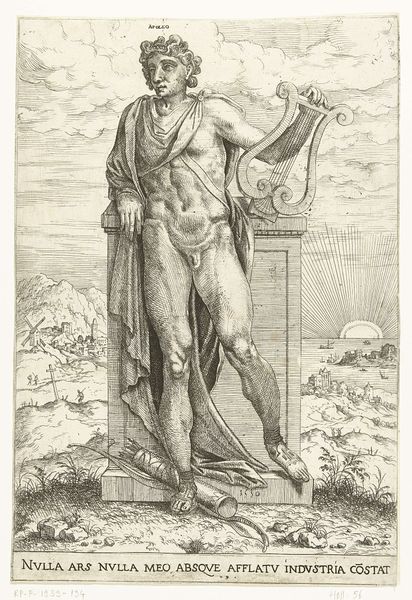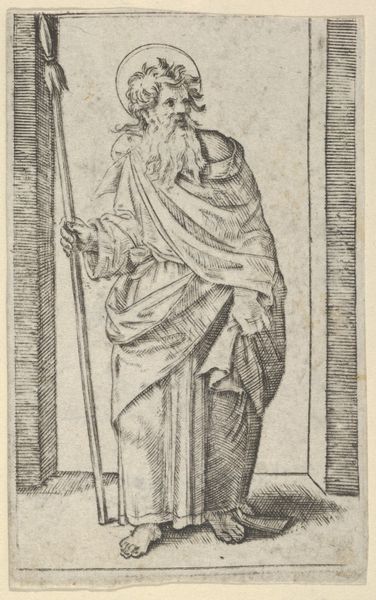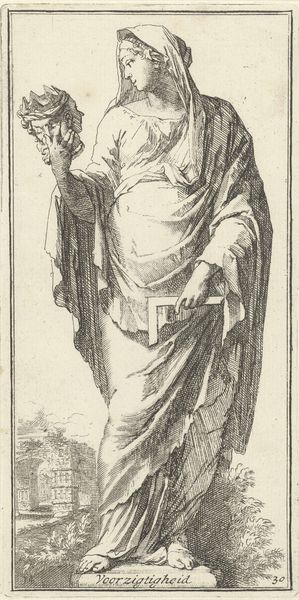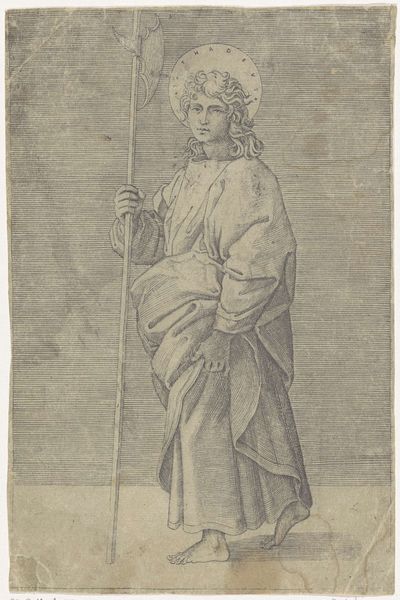
Staande vrouw met een staf en een figuur op een bol in haar handen 1619 - 1690
0:00
0:00
drawing, ink, pen
#
portrait
#
drawing
#
baroque
#
pencil sketch
#
charcoal drawing
#
figuration
#
ink
#
pencil drawing
#
pen
#
portrait drawing
#
history-painting
Dimensions: height 282 mm, width 140 mm, width 145 mm
Copyright: Rijks Museum: Open Domain
Curator: Standing before us is “Standing Woman with a Staff and a Figure on a Globe in her Hands,” a drawing attributed to Peter van Lint, likely created sometime between 1619 and 1690. Editor: My first impression is of statuary. The neutral tones, the classical garb... it feels like a preliminary sketch for a much larger, probably stone, figure. I notice how much detail is focused on the figure's drapery. Curator: Precisely! The clothing helps us understand the figure as an allegory, perhaps depicting Prudence, with the serpent, the helmet and other iconographic devices as allegorical signals. Look how those architectural forms—that capitol above her head—suggest stability and order. And her gaze seems directed at a distant future. Editor: I'm particularly interested in the medium. The piece utilizes pen, ink, and what appears to be pencil – readily available, practical materials. This choice underlines the image’s function as a study rather than a final, polished piece, it also challenges a clean stylistic assessment and suggests that many practices happened on one site to determine a proper and complete image. The visible construction is key. Curator: Absolutely, but consider the cultural context. In the Baroque era, allegories served as moral compasses. This depiction might offer clues to the ideals of the patrons commissioning artworks during that period – it almost makes me think of female leaders as well, because women’s contributions at the time were never shown or discussed, except in some artworks and representations. This kind of piece visualizes female influence and authority through allegorical forms. Editor: The artistic labour is not necessarily evident – we're asked to assume mastery based on the subject of allegory, but what are the indications of the mastery? I suspect that’s why the construction of it being more "rough" with a diverse amount of mediums is telling about how this work can function and be used at different capacities in an artists production. The material handling is so interesting! Curator: Perhaps what is suggested is more useful than any actual "skill," with skill and craftsmanship not yet fully formed to produce perfect images as what comes in Neoclassical artwork. Anyway, by exploring this artwork, we've touched on the convergence of artistic creation and cultural meaning in 17th century Netherlands, from female power to the materiality itself of its construction. Editor: Indeed! It's a great point that artistic ideas are really made clear through different stages of production; understanding this piece more closely helps one understand production and dissemination better as well.
Comments
No comments
Be the first to comment and join the conversation on the ultimate creative platform.
